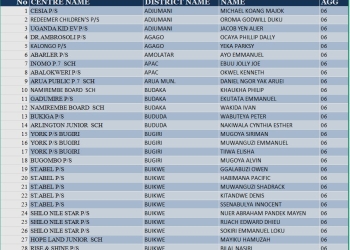
KAMPALA, Uganda — The Uganda Electricity Generation Company Ltd. (UEGCL) has issued a stark warning about the structural integrity of the $568 million (Shs2.2 trillion) Isimba Power Plant, stating that continued delays in repairing defects could lead to a catastrophic dam failure and a complete shutdown of the facility.
UEGCL Chief Executive Officer Harrison Mutikanga on Friday told officials from the Inspectorate of Government (IG), led by Inspector General of Government (IGG) Beti Kamya, that the persistent issues with the dam’s spillway, being addressed by the Chinese contractor China International Water and Electricity Corporation (CIWEC), pose a significant and growing risk.
“A dam failure would be catastrophic because of the downstream communities, activities happening there,” Mutikanga said, emphasizing the potential for widespread devastation. He urged CIWEC to undertake effective and long-term repairs, suggesting the possibility of constructing a new spillway.
The Isimba Dam, commissioned in 2019 after being built by CIWEC under an Engineering, Procurement, and Construction (EPC) contract, began exhibiting defects in July 2022, just two years after its completion. These issues were exacerbated in August 2022 when an operational error caused flooding within the powerhouse, leading to a power blackout.
Mutikanga explained to the IGG that while emergency underwater repairs were conducted on the spillway, subsequent inspections revealed ongoing erosion of the concrete and cracks in the joint seals. He warned that this could lead to “hydraulic jerking,” potentially lifting the concrete slab and causing backward erosion that could compromise the dam’s foundation and ultimately result in its failure.
He also expressed concern about the spillway’s compromised ability to handle its designed flood capacity, especially with increasing rainfall.
Herbert Kato, a senior officer at the Ministry of Energy and Mineral Development, noted that while the dam is currently generating power, the early emergence of defects after only five years raises serious concerns about its intended 100-year lifespan for concrete structures and 40 years for electrical designs.
Mutikanga stated that while UEGCL has been able to repay over half of the loan from the Exim Bank of China due to the plant’s power generation, the unresolved defects threaten its long-term viability. He added that CIWEC was initially given two years to rectify the issues, but multiple extensions have been granted with little progress.
“If the contractor does not fix these defects in time, the functionality of the power plant will be compromised, but the major defect we have is the dam spillway, which is a dam safety risk that could result in a dam failure,” Mutikanga said, stressing the urgency of the situation and the potential for contract termination if the repairs are not adequately addressed.
The concerns voiced by UEGCL echo previous criticisms. In February, four CIWEC officials were briefly arrested by Parliament Police after contradicting earlier reports and denying liability for the defects before a parliamentary committee. The committee chairperson, Herbert Ariko, had strongly criticized CIWEC’s stance, which contradicted warnings from the owner’s engineer and the Ministry of Energy.
Following Friday’s closed-door meeting, IGG Beti Kamya told reporters that she was “not impressed” with the structural integrity she observed and would produce a detailed report in three weeks to determine her next course of action. She also raised concerns about the nature of EPC contracts and the need for stricter supervision.
Officials from CIWEC did not speak to the media after the meeting.

















